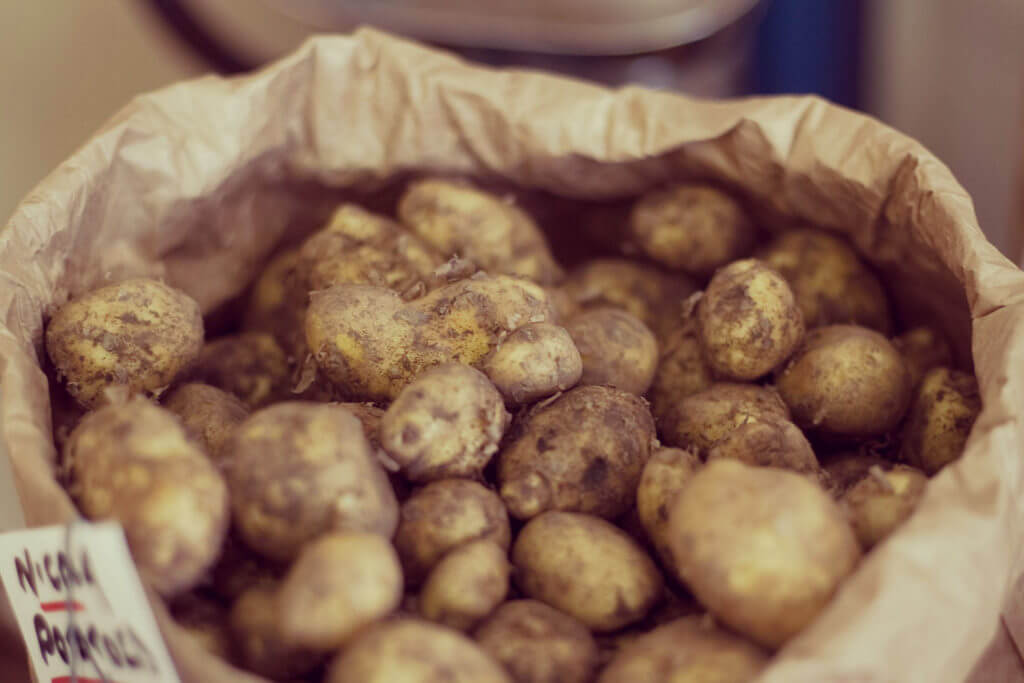 Get the most out of your veg…
Get the most out of your veg…
Stalks, outer leaves and leafy tops of vegetables are packed with nutrition and flavour, and should not just be relegated to your compost bin. You pay for most veg by weight, so it makes sense to eat as much of it as possible. Here are some ideas of what to do with them.
Broccoli stems
Cut off any fibrous ends or tough outers; cook them just as you would the florets, slice into rounds and stir fry, add whole stems to soup before blending, cut into batons and eat raw with dips, shred raw into salads, blend with lemon & garlic to make a pesto, roast and add to pasta. Treat them as you would asparagus (which is also a stem!).
Cauliflower & broccoli outer leaves and sprout tops
Use as you would cabbage leaves – they are after all part of the same brassica family. Shred and stir fry, sauté with wholegrain mustard and add to mashed potato, chop the smaller, newer leaves into salads, dice into soups, fry-up with potatoes for bubble & squeak.
Celery & celeriac leaves
As flavoursome as the stems or root; chopped finely they can be used as you would parsley, as a garnish or to flavour soups and stocks. Basically, whatever you’re using the celery or celeriac for, use the whole thing, tops and all.
Kale stems
A lot of people throw away kale stalks, but you needn’t waste them, they make a great pesto. The Riverford recipe below is just a guide…you don’t need to worry too much about exact quantities and while it says pumpkin seeds you could use other nuts or seeds; pine nuts and cashews would both be great. The toasted cumin adds an extra dimension, but you can play around with herbs and spices. Garlic and lemon would work well instead.
This is great tossed through pasta, on top of bruschetta, dolloped on pizza, or even swirled through soup.
- 2 handfuls of kale stalks, roughly chopped
- 50g pumpkin seeds
- 1 tbsp cumin seeds, toasted & ground in a spice grinder
- 1 garlic clove, peeled
- Olive oil
- 1 lemon
Put the kale stems in a food processor. Add the pumpkin seeds, toasted cumin and garlic clove. Pour in a few good glugs of olive oil to start with; you can always add more if you need it. Blitz the ingredients together. If you like your pesto a bit chunky, don’t blend for long. For a smoother consistency, blend for longer. Add more olive oil if needed. Finish by squeezing in half the lemon and a little salt and pepper. Stir, taste, and add more lemon or seasoning to suit your taste. Keep in the fridge and use within one week.
Carrot tops
Some debate about whether you can eat them, but as long as they’re in decent nick they ARE edible… and vitamin rich! High potassium content can make them bitter, so mix with sweet vegetables or salads, chop them into a vinaigrette with fruit syrup or steep with boiling water for a delicious, cleansing tea. Use them only when they’re fresh – old ones will taste bitter – and if you’re storing carrots in the fridge, remove the tops first as they will sap moisture from the carrot causing it to wilt prematurely.
Carrot top pesto (from Riverford)
- leafy tops from 1 bunch of carrots, larger stems discarded, feathery leaves chopped
- small handful basil leaves, or try parsley or chervil for a different flavour
- 50g walnuts, hazelnuts or almonds
- 25g Cibus parmegano
- 1 garlic clove
- approx. 100ml or so olive oil
- salt and pepper
In a food processor, blitz the carrot tops, basil, nuts, parmesan and garlic, then gradually add enough oil to make a pesto consistency. Season to taste.
Beetroot leaves
Use up as soon as you can as they’ll not keep as long as the beetroot itself. Cook as you would spinach; steam or sauté with olive oil, chilli, garlic & pine nuts, add to soups, use the younger leaves in a salad.
Turnip leaves
Known as turnip tops or turnip greens, they resemble mustard greens in flavour and contain 4X the calcium of cabbage. Leaves from very large turnips will be too old and bitter, so chose small ones. Cut off and discard tough stems and discoloured leaves and (again), treat as spinach; blanch briefly and sauté with olive oil, or add to braised turnip root.
Fennel tops and stalks
The feathery, bright-green fennel fronds and stalks are a great way to add flavour to your dish, as you would with any other fresh herb, they have sweet aromatic liquorice-like flavour. Toss into pasta, add to risottos, stews or roasted veg.
Leek & Spring Onion tops
There’s no need to cut off the green upper leaves, unless they’re tough or discoloured (in which case use them to flavour stock). Use as you would the rest of the vegetable. Thicker green bits take a little longer to soften than the whiter stuff, so add them to the pot a few minutes early.


